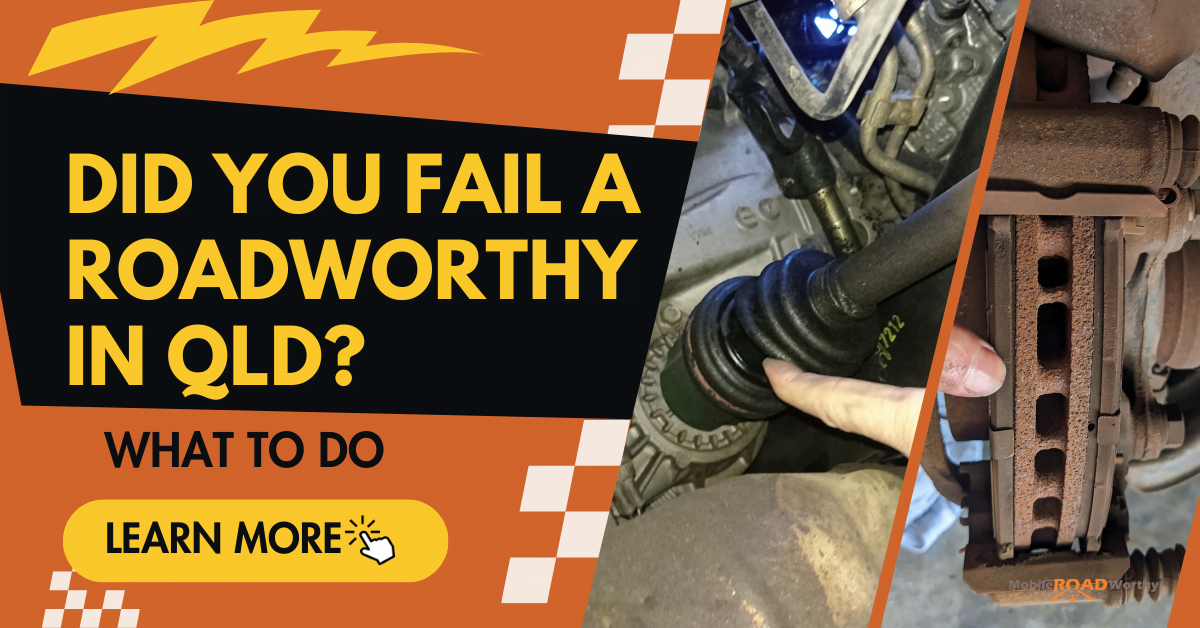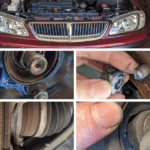So, you’ve booked your RWC (Roadworthy Certificate) in Queensland, dreaming of a smooth registration renewal or a hassle-free sale. But suddenly, your mechanic drops the dreaded news: your car failed. Don’t panic! Failing an RWC doesn’t mean scrapping your vehicle, just a little detour on the road to motoring bliss. Here’s what you need to know.
Table of Contents
Take a Deep Breath, It’s Not the End
Failing an RWC (QLD Safety Certificate) is surprisingly common, and it doesn’t automatically brand your car as a deathtrap. The inspector is simply ensuring your vehicle meets minimum safety standards for Queensland roads. Think of it as a wake-up call for some much-needed TLC.
The 14-Day RWC Fix-It Window
You’re not out for the count just yet! Queensland gives you a generous 14 days to address the issues identified in the failed report. This means getting your trusty mechanic to work their magic and fix those faulty brakes, worn tires, or malfunctioning lights.
No Repeat Fees, Just Repairs
Unlike some states, Queensland doesn’t charge you another full inspection fee for a re-test within the 14-day window. Just pay a small re-inspection fee or call-out fee, and once your car passes, you’re good to go.
Prioritize Safety, Not Speed
Don’t rush the repairs just to meet the deadline. Focus on getting the job done right, ensuring your car is truly safe and reliable. Remember, it’s your safety and the safety of others on the road at stake. No one likes a dodgy car on the road.
Beyond the 14 Days
If you miss the 14-day window, the original inspection gets cancelled, and you’ll need to go through the entire process again, including a full re-inspection and fees. So, stick to the timeline and avoid unnecessary delays.
Tips to Avoid Failing Your Roadworthy Inspection
- You can perform simple checks on all the areas typically tested in a roadworthy inspection either by yourself or with the help of a friend who is knowledgeable about mechanics.
- If you want to, you could simply have a mechanic perform a quick service on these areas to bring them up to scratch before your inspection too.
- You can download the latest versions of the vehicle inspection manuals for both light and heavy vehicles. Approved inspection stations use vehicle inspection manuals to inspect motor vehicles and issue certificates of inspection or safety certificates. These manuals are also utilized by transport inspectors and police officers to determine if a vehicle is defective.
Here Are the Six Most Common Areas of Failure
- Tyres
- Brakes
- Steering
- Suspension
- Body rust or damage
- Windscreen
- Lights
If you regularly service your vehicle at a garage, your chances of passing a roadworthy inspection will be significantly higher. Regular checks and services can greatly contribute to this.
The same principle applies to how well you maintain your vehicle. If you take good care of it, you will have a higher chance of passing your safety inspection. Older cars are more prone to failure and may take longer to pass inspections due to the increased safety checks in place to protect all road users.
Take all necessary steps to pass your vehicle inspection test on the first attempt. It would be in your best interest to learn how to successfully pass your vehicle’s roadworthy inspection the first time.
Seek Help if Needed
If the repair costs seem overwhelming, don’t hesitate to explore options. Talk to your mechanic about cost-effective solutions, consider negotiating repairs, or even look for used parts in good condition. Remember, a safe car is worth the investment.
Failing an RWC can be a setback, but it’s not a roadblock. Embrace it as an opportunity to improve your car’s safety and performance. With a little planning, patience, and some TLC, you’ll be cruising the Queensland roads in no time. You can
Bonus Tip: Ask your mechanic for a detailed explanation of the fail points. This will help you understand the severity of the issues and make informed decisions about repairs. Then you can check it against the QLD Vehicle Standards Instructions.
Remember, knowledge is power! Knowing what to expect and how to navigate the process can make a stressful situation much more manageable. So, keep calm, fix the flaws, and get your car back on the road, where it belongs.
Some links in this post are affiliate links, which means we may earn a commission at no extra cost to you. Please refer to our disclaimer for more info.







